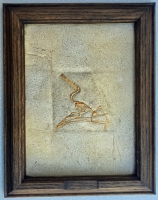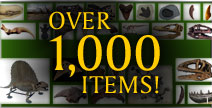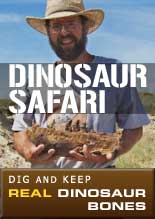
Ctenochasma is distinguished mainly by its numerous (over 400 in adults) long, thin, curved and closely packed teeth, which lined its elongated and narrow snout. The teeth were so closely packed that they formed a comb, and in adults they projected outward away from the jaws, forming a basket; traditionally, these are thought to indicate a filter feeding lifestyle, straining water through the teeth in order to capture and eat small invertebrates, but unlike the related Pterodaustro it lacks adaptations that would form a pumping mechanism. Instead, the spatulate profile formed by the teeth probably indicate a spoonbill-like lifestyle, increasing the surface area of the jaws in order to catch small prey. The snout curved slightly upward and was rounded at the tip, and the teeth were restricted to the front half of the jaws.
The smallest species, Ctenochasma elegans, had a wingspan of only about 25 centimeters (9.8 in). Ctenochasma is distinguished by its mouth which contained as many as 260 long, thin comb-like teeth. Adult Ctenochasma had a bony crest along the skull, though this is not found in juveniles.
Comparisons between the scleral rings of both Ctenochasma elegans and Ctenochasma taqueti and modern birds and reptiles suggest that these taxa may have been nocturnal, and may have had activity patterns similar to modern nocturnal seabirds. This may also indicate niche partitioning with contemporary pterosaurs inferred to be diurnal, such as Pterodactylus and Scaphognathus.
The name Ctenochasma was coined by the German paleontologist Christian Erich Hermann von Meyer in 1852, based on a single lower jaw full of closely packed teeth which he gave the species name Ctenochasma roemeri. Later discoveries found 2 more species, C. taqueti and C. elegans.
Although researchers in the late 1990s and early 2000s, including Bennett and Jouve, suggested that all these species probably represented growth stages on just one kind of Ctenochasma, in a more comprehensive 2007 study, Bennett demonstrated that three distinct species could be recognized based on the number and slenderness of the teeth, which varied across all growth stages. C. roemeri, the earliest species, is characterized by its relatively low number of only moderately slender teeth. The later C. taqueti had a moderate number of slender teeth, and the last species, C. elegans, had a high number of very slender teeth. These three species, arranged chronologically, probably represent a single evolutionary lineage in which the filter-feeding apparatus was gradually refined.
HIGH DENSITY POLYURETHANE
12 x 9.5 Frame
Item 3930
Category: Replicas
Type: Skeletons
Phylum: Vertebrates
Class: Pterosaurs
MORE PHOTOS:


Now Over 1,000 Items!
PrehistoricStore.com offers the largest selection of replica fossils and other fossil-related products anywhere in the world!
Download a Full Catalog (3MB PDF)
OVER 260 PAGES OF REPLICAS AND MORE!
